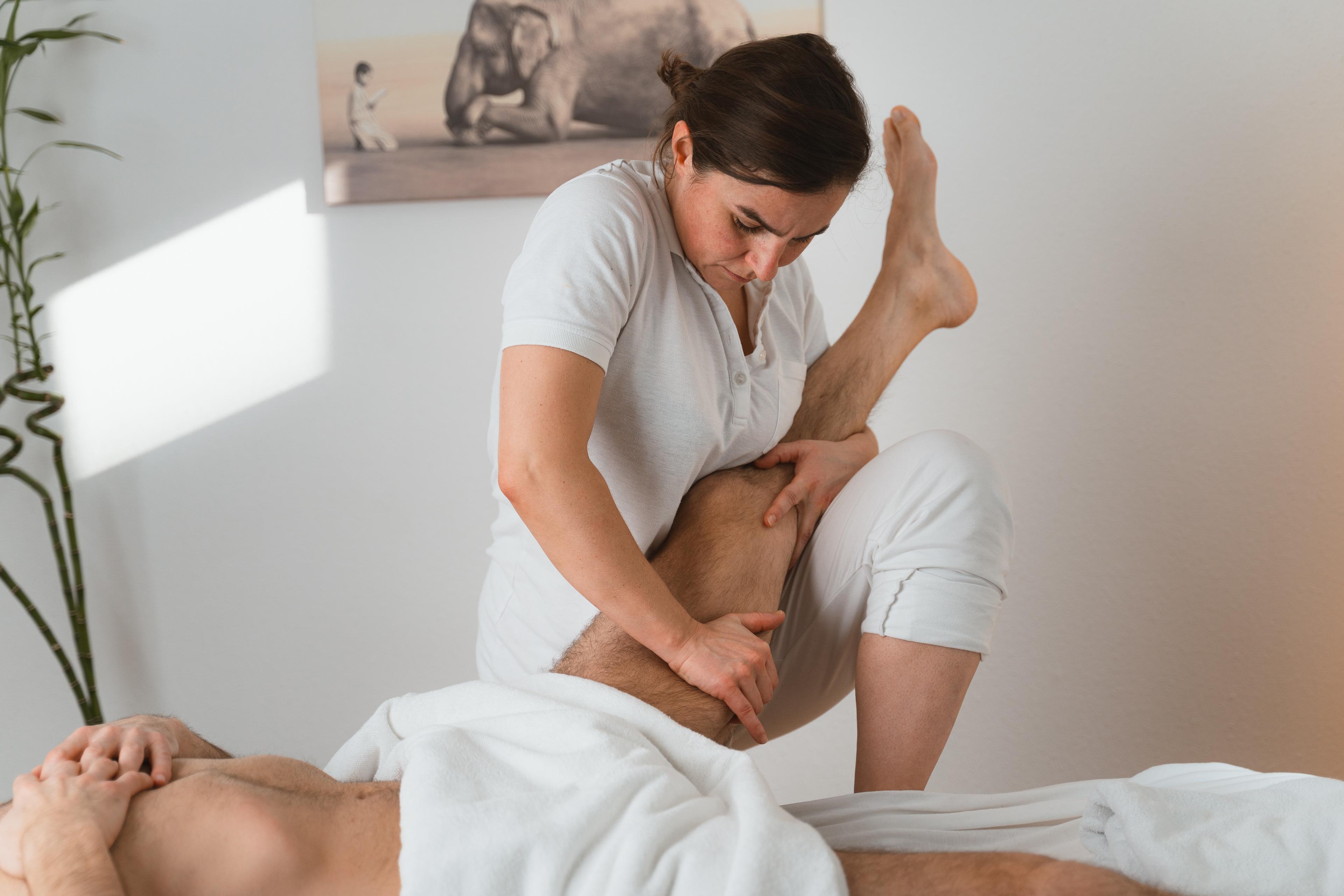What is osteopathy?
In osteopathy, the body is seen as a unit. One deals with the cooperation of all structures in the body. It is a holistic and manual therapy to diagnose and treat functional disorders.
Instead of being seen as local, problems are recognized as the interplay of different systems and structures in the body. Therefore, in osteopathy, the musculoskeletal system, tissues, muscles, and organs are examined, treated, and harmonized. Blockages and tensions are released to relieve discomfort and restore the mobility and function of the body. Basically, the causes of the problem are searched for instead of just treating individual symptoms.
In addition, osteopathy assumes that the body has self-regulating healing mechanisms. However, these can be thrown out of balance by various circumstances, causing physical discomfort and dysfunction. The goal of osteopathic therapy is therefore to restore balance in the body and activate the body’s self-regulatory mechanisms.
In osteopathy, one works with 4 different, but interacting, systems of the body:
- The structural and parietal system
- The visceral system
- The craniosacral system
- The endocrine system (endocrine system)
Parietal osteopathy
In parietal osteopathy, disorders of the musculoskeletal system are detected and treated. These disorders can lead to severe pain or impaired movement. Muscle tension, joint blockages, and fascia/connective tissue adhesions are loosened to relieve the pain in the musculoskeletal system.
Visceral osteopathy
Visceral osteopathy deals with the treatment of internal organs. In osteopathy, it is believed that organ complaints are often caused by a disturbing environment of the organ or a disturbance of organ movement. This can be exacerbated by stress, a wrong diet, or lack of exercise. In addition, organic complaints can be passed on to the skeletal system through reflexes and thus affect the musculoskeletal system. Therefore, in visceral osteopathy, the movement of the organ is promoted by various pulling, pressure, and sliding techniques, and tension of the ligaments and fascia (the environment) is released. This promotes organ movement and stimulates the vitality of the organ.
Cranio-sacral osteopathy
In craniosacral osteopathy, the focus is on the functional unit between the cranium (skull), the spinal canal (dural tube), and the sacrum (sacrum). The area of the brain and spinal cord is called the hydraulic system. The American doctor William Sutherland became aware of a minimal pulsation in this system. This rhythmic pulsation can be thrown out of balance by various external influences. If the flow of energy is inhibited, this can lead to physical problems and diseases. The osteopath, therefore, scans the body for disturbances of the craniosacral rhythm and tries to bring it back into harmony.
The endocrine system
The hormonal system is a network of many cells and glands that secrete signaling substances (hormones). The osteopath treats this system indirectly when working with the other three systems.
What are the different osteopathic approaches and where do they come from?
The osteopathic therapy line was founded in America at the beginning of the 20th century. Basically, there are two directions in osteopathy: The energetic school, which works more with the subtle level, and the anatomical and manual school, which focuses completely on the existing visible anatomy.
Over the decades, however, the two schools have also partly mixed and different approaches have emerged. You can think of this as a tree that has grown new branches over time and continues to grow.
When can osteopathy help?
Osteopathic treatments are very suitable for functional disorders of the body or chronic physical complaints. These can be neck and back pain, but also joint problems, such as knee pain. Organic complaints can also be counteracted with this therapy. For example, constipation can often be positively influenced. Sometimes the reason for organic complaints lies in the environment of the organ. Here, the osteopath changes the structure of the environment in order to optimize it for the organ.
What's an example for the course of treatment?
This is an example of what a treatment can look like. The exact procedure depends on the treating osteopath.
- The client may decide whether to keep clothes on or take them off.
- The therapist perceives the skin and statics of the client. She looks at how someone stands and how their eyes stand.
- The client himself describes his body and how he perceives it.
- In the first hour, it might be the case that you just talk. Plenty of time should be allowed to fully examine the problem.
- After the problem has been explained, the therapist and client decide together how to treat it. Does the client want a more active or passive approach? Does the client generally want to have a say in the decision herself or put herself fully in the hands of the therapist?
- The physical treatment starts. Sometimes there is a mix of massage, osteopathic techniques, and active physical exercises.
Osteopathic treatments can sometimes be painful at first or have a strong lasting effect. This is quite normal and not a cause for concern.
How many treatments are usually needed?
That depends entirely on the problem. Chronic pain, which has developed over years, usually requires more treatments than acute physical trauma.
The client’s willingness to actively participate also influences the process. It can accelerate it and lead to more sustainable results.
As a rule, it becomes clear after the first three treatments whether the osteopathic approach starts or whether another form of treatment might be more suitable.

